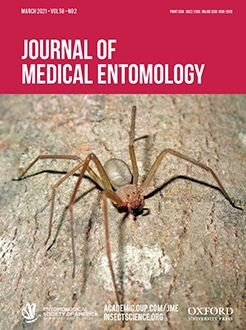Dirofilaria immitis (Leidy, 1856) and Dirofilaria repens (Railliet & Henry, 1911) are mosquito-borne filarial nematodes that primarily affect dogs, causing heartworm disease and subcutaneous dirofilariosis. The canine heartworm is reported in different provinces in Turkey. However, studies about the transmitting mosquito species are limited. Hence, this study aimed to investigate potential vectors of D. immitis and D. repens in Aras Valley, Turkey. In total, 17,995 female mosquitoes were collected from eight villages during three mosquito seasons (2012–2014) in Aras Valley, located in north-eastern Turkey. A total of 1,054 DNA pools (527 abdomen and 527 head-thorax) were tested with Dirofilaria primers by multiplex-polymerase chain reaction (PCR). Aedes caspius was the most abundant species in collection sites with 90%; this was followed by Culex theileri Theobald, 1903 (Diptera: Culicidae) (7.31%), Anopheles maculipennis Meigen 1818 (Diptera: Culicidae) (1.28%), Culex pipiens Linnaeus, 1758 (Diptera: Culicidae) (0.43%), (Anopheles) hyrcanus (Pallas, 1771) (Diptera: Culicidae) (0.37%), Aedes vexans (Meigen, 1830) (Diptera: Culicidae) (0.25%), and Culiseta annulata Schrank, 1776 (Diptera:Culicidae) (0.02%). Dirofilaria immitis and D. repens were detected in mosquito pools from five villages. The total Dirofilaria spp. estimated infection rate was 1.33%. The highest estimated infection rate was found in Ae. vexans (6.66%) and the lowest was in Ae. caspius (1.26%). The results show that An. maculipennis sl, Ae. caspius, Ae. vexans, Cx. theileri and Cx. pipiens are potential vectors of D. immitis and D. repens with DNA in head-thorax pools; An. hyrcanus is also a likely vector, but Dirofilaria DNA was found only in abdomen pools for the study area. This study revealed new potential vector species for D. immitis. Mosquitoes with natural infections of D. repens were reported for the first time in Turkey.
Graphical Abstract






